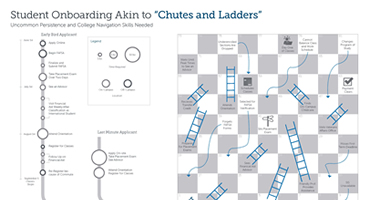College Football’s Unexpected Impact on Enrollment
Title: Institutional Effects of Adding Football: A Difference-in-Difference Analysis
Authors: Welch Suggs, Alex B. Monday, Jennifer May-Trifiletti, and James C. Hearn
Source: Research in Higher Education
As higher education stares down a declining college-going population, institutions must grapple with how to improve or stabilize enrollment and ensure financial security. Football is seemingly inextricable from higher education and even more intertwined with the nation’s culture and identity, so institutions may add a football team with the hope of attracting athletes, spectators, and stakeholders.
In a recent article published by Research in Higher Education, the authors study the enrollment and tuition revenue patterns of 36 institutions that adopted a football team from 2004-2016 to determine if the addition of this sport had a meaningful effect on enrollment numbers, enrollment demographics, or net tuition and fee revenue, compared to institutions that did not adopt a football program.
Findings on variables of interest include:
Male enrollment: In the year before and during the year the football team was established, there was a slight increase in enrollment, most of which comprised men. The authors pose that this could be due to the large size of football rosters, which are almost exclusively male. Following this initial increase, the addition of football had no long-term significant impact on overall enrollment or male enrollment; institutions’ enrollment patterns after adding a football team mimicked those of institutions that did not add a team.
Black enrollment: There was no statistically significant impact on Black enrollment, even in the years before and during the addition of a football team. The authors note that findings about football’s impact on Black enrollment may be impacted by varying racial and ethnic demographics at local and state levels, as well as across NCAA divisions. Whereas nearly half (49 percent) of Division I football players are Black, 46 percent of Division II and 23 percent of Division III players are Black.
Tuition and fee revenue: Adding football had no impact on tuition revenue per student, including the year in which the team began. Net tuition and fee revenue, including financial aid awards, is a vital financial indicator for institutions, particularly small, private schools with high costs of attendance.
For all variables of interest, there was no significant impact in the first full year after adopting the team. Therefore, if institutions are looking to diversify enrollment or raise tuition and fee revenue, adding a football team may not be the best remedy. However, adding a football team can have other positive impacts on institutions, such as boosting morale, fostering community, or promoting a residential campus.
To read the full article, click here.
If you have any questions or comments about this blog post, please contact us.


